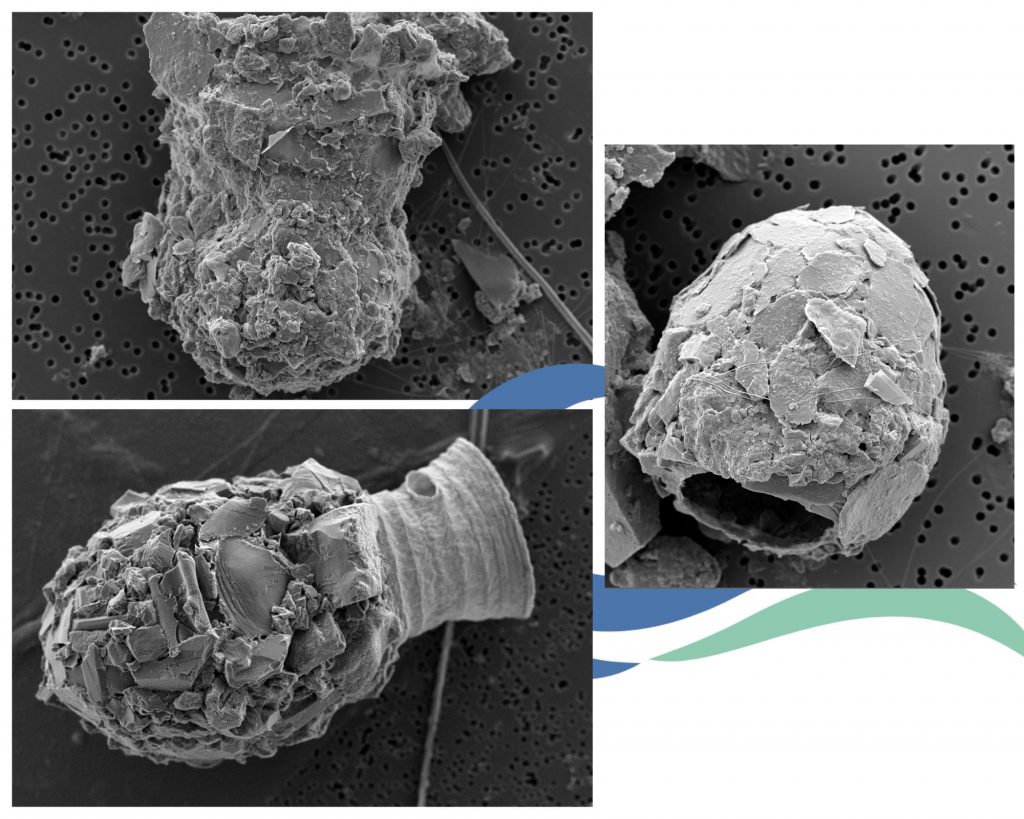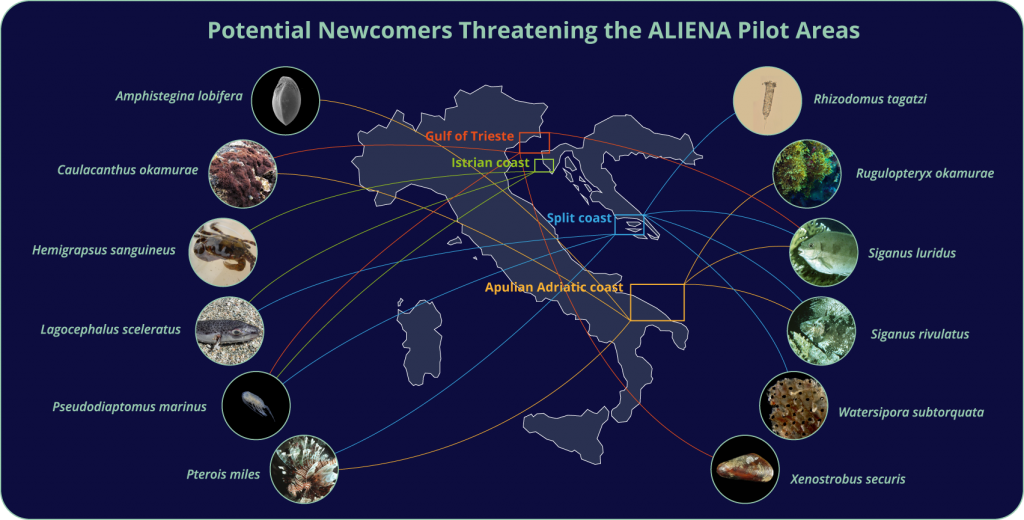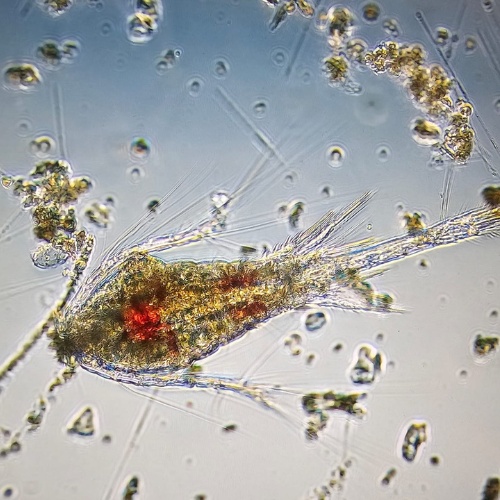What Are Non-Indigenous Species?
Non-indigenous species (NIS), also called exotic, non-native, or alien species, are organisms introduced outside their natural range due to human activities. When these species establish self-sustaining populations and spread aggressively, they become invasive alien species (IAS), capable of causing ecological, economic, or even health-related harm. The European Union (Regulation EU No. 1143/2014) defines IAS as species whose introduction or spread threatens biodiversity and ecosystem services.
Non-Indigenous Species in the Adriatic Sea: Understanding the Ecological Challenge
Non-indigenous invasive species (NIS) are globally recognized as one of the most significant threats to marine biodiversity, ecosystem stability, and the services these ecosystems provide. Their introduction, due to human activities such as shipping, aquaculture, or climate change, can disrupt native habitats, outcompete local species, and alter food webs. In the Adriatic Sea, a semi-enclosed basin with unique ecological characteristics, the spread of NIS poses a growing challenge for conservation and sustainable management.

The Invasion Process: From Introduction to Impact
The journey of an NIS into a new environment follows key stages:
- Transport – Accidental or intentional movement (e.g., via ballast water, hull fouling, or aquaculture).
- Introduction – Release into the wild.
- Establishment – Survival, reproduction, and formation of a stable population.
- Spread – Expansion beyond the initial introduction site.

Not all introduced species become invasive. Some estimates suggest only 10% of introduced species establish, and just 10% of those become invasive (the “tens rule”). However, recent studies indicate higher establishment rates, 25% for invertebrates and plants, and 50% for vertebrates, highlighting the growing risk of bio-invasions.
Legal and Scientific Frameworks for Monitoring NIS
The EU Marine Strategy Framework Directive (MSFD, 2008/56/EC) includes NIS under Descriptor 2 (D2), requiring that they do not “adversely alter ecosystems.” Similarly, the UNEP/MAP Integrated Monitoring and Assessment Programme (IMAP) tracks NIS under Ecological Objective 2 (EO2), emphasizing the need for updated inventories to assess ecological status.
Current Status of Non-Indigenous Species in the Mediterranean Sea
To date, 1,189 species from 25 phyla have been recorded in the Mediterranean Sea, with 1,101 confirmed as non-indigenous (NIS), 6 cryptogenic (uncertain origin), and 46 unresolved under EU Regulation No. 1143/2014. Among NIS, 1,041 are classified as alien species, 4 as likely alien, and 56 as questionable. Notably, 22 species are recognized as Invasive Alien Species (IAS) by the IUCN and other authoritative sources, posing significant ecological and economic threats.
Regional Distribution of NIS and IAS
The Mediterranean subregions show varying levels of bioinvasion:
- Eastern Mediterranean (EMED): Highest NIS diversity (829 species), but relatively few IAS (8 species).
- Western Mediterranean (WMED): 358 NIS, with 15 IAS—the highest number of invasives.
- Central Mediterranean (CMED): 335 NIS, 9 IAS.
- Adriatic Sea (ADRIA): 216 NIS, 14 IAS—indicating a high invasion risk relative to species richness.
Italy and Croatia: Hotspots for Marine Bioinvasions
- Italy: Hosts 273 NIS, including 18 IAS, with notable concentrations in Puglia (107 NIS) and the Gulf of Trieste (92 NIS).
- Croatia: Records 116 NIS and 9 IAS, with Istria alone documenting 59 NIS (32 identified via DNA barcoding).

Taxonomic Breakdown of NIS
- Chromista (Myzozoa): Dominates records, particularly in Istria, due to advanced DNA detection methods.
- Plantae (Rhodophyta): Highly prevalent in Puglia, Central Adriatic Croatia, and the Gulf of Trieste.
- Animalia: Most NIS belong to Annelida, Arthropoda, Mollusca, and Chordata (especially Ascidiacea and fish).

Potential Newcomers Threatening the ALIENA Pilot Areas
The rate of IAS introductions has increased due to globalization and expansion of many activities, such as transport, fisheries, aquaculture and wildlife trade, with majority of introductions being accidental (Hulme 2009; Katsanevakis et al. 2013, Essl et al. 2015; Roques et al. 2016). The prevention of introduction and mitigation of consequences of biological invasions in Europe constitutes a significant challenge. To address this the European Union (EU) adopted the Regulation (EU) 1143/2014 (IAS Regulation), aimed at prevention and management of the introduction and spread of IAS. The IAS Regulation prioritizes a subset of IAS of Union concern included in the Union list. The regulated IAS can severely harm biodiversity and are therefore subjected to dedicated concerted measures at Union level). The list of IAS of Union Concern, is informed by the European Alien Species Information Network (EASIN) (EU 2014, Art. 25).

